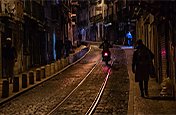How leading lines guide the eye.
Draw attention to the subject of your photos in a unique way with leading lines photography. Explore this technique and try it for yourself at your next shoot.
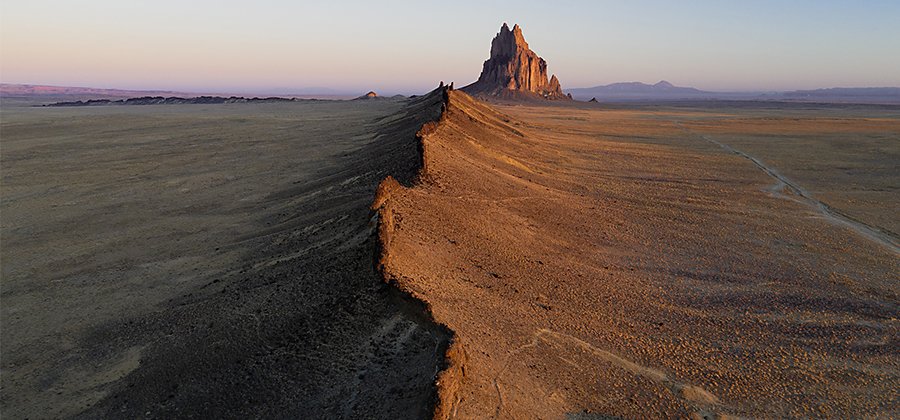
Lead the way with leading lines.
“Leading lines are a compositional technique where human-made or natural lines lead the viewer’s eyes through a photograph to the subject or the heart of the image,” explains photographer Lukas Kosslow. “They can be very noticeable or they can be quite subtle.” This compositional tool helps photographers direct the focus of the photo, create balance, and tell a story with the image.
Like the rule of thirds, leading lines are a compositional element that can be used across all kinds of photography, from portraits to landscape shots. “Leading lines can be anything. They can be a road or a line of trees leading you somewhere. They can be people and repetitive objects, like railroad tracks,” says photographer Felipe Silva.
And while many photos may unintentionally contain lines that highlight a specific point of interest, intentional lines and compositions make for the strongest images. Whether you use bold straight lines or graceful curving ones, leading lines can elevate your composition and add a unique aesthetic to your photos.
Different kinds of leading lines.
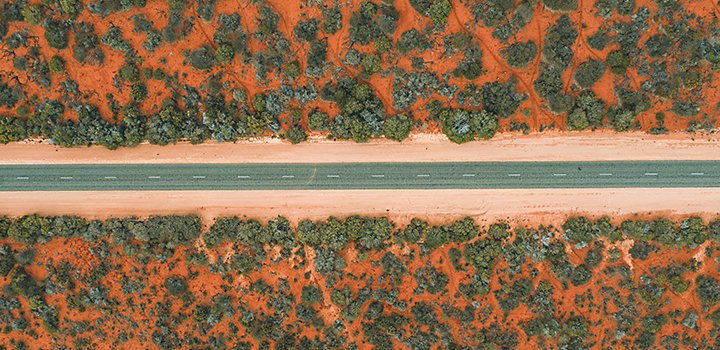
Horizontal lines
When you think of horizontal lines, the horizon immediately comes to mind. “Horizontal leading lines are mostly used in landscape photography. You can have a path or a dirt road leading to a straight river or a fallen tree. They convey a sense of stability. They’re ongoing, and you can rely on them,” explains Silva. But be careful about horizontal lines leading the viewer’s attention completely off the page, unless that’s your intention.
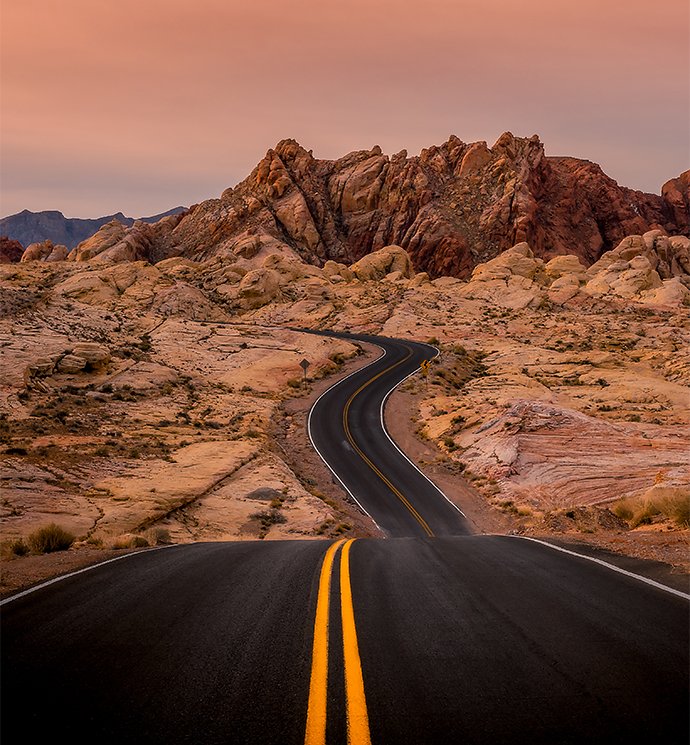
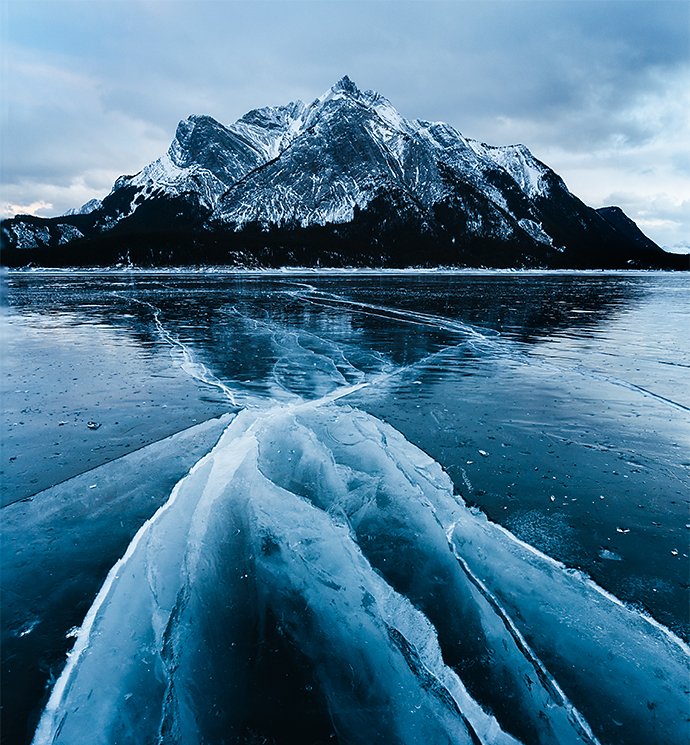
Images by Felipe Silva
Vertical lines
Vertical lines draw the viewer’s eye to the top or bottom of the image. “Vertical lines convey power and confidence, so you see a lot of vertical leading lines in fashion photography, portraiture, and street photography,” says Silva. You’ll find many vertical lines, like lamp posts and window panes, in human-made settings.

Diagonal lines
If you want a sweeping composition, consider diagonal lines. “They give a sense of movement and change, but they’re less common to see in photos. Diagonal lines often emphasize distance from the foreground to the background,” notes Silva.

When lines meet and intersect, they can halt the viewer’s eye. They can also be used to create tension and conflict or to redirect the focus of the photo. When lines from the foreground and background meet, they create a sense of depth or distance. The vanishing point, or the spot where a road meets the horizon line, is one example of a converging point.

Curved lines
Natural, meandering lines are most common in landscape photos. “I think the best type of leading lines are ones that curve because they can bring the viewer’s eye through the entire image,” says Kosslow. Whether it’s bending flower stalks or rolling hills, curved lines can create compelling landscape photography.
How to find your lines.
Plan ahead.
If you want to use lines in your photoshoot, choose your location wisely. Plan your shoot to incorporate bridges, roads, boardwalks, or railroad tracks to add strong straight lines to your composition. Bodies of water, hiking trails, tree lines, and snowbanks can create more natural, curving lines. If you have trouble getting started, just look at your setting and examine the textures and patterns you see.
Focus on your subject.
Leading lines should always point to the main subject of your photo and direct the viewer’s attention. To use this compositional technique effectively, you’ll want to place your subject where the lines point or converge. If you’re conducting a fashion photography shoot, the clothing and the model will be the focus of the photo. With architecture photography, “you find the building, your subject, and then you work backward. You walk around it and you look for lines that lead to that building. You want to show your viewer what you see, but you also want to direct their eyes,” explains Silva.
Be spontaneous.
While leading lines are something you can often plan for and scout out, sometimes you run across them accidentally. Keep an eye on your surroundings, try different photo compositions, and approach your subject from unique angles. When you try something new, you may find unexpected lines.

Composition tips for stunning photos.
Start with your phone.
Leading lines photography often requires some uncommon camera positions and obscure angles to get the shot you want. Use your phone to take a quick snapshot of your image and adjust and tweak your location and positioning. This lets you move around freely to get the exact composition you want, without adjusting a bulky camera and tripod every time. “You can get an idea of what the photo will look like on your phone before investing the time to set up the full shot,” says Silva. When you have the right position, it’s time to swap in your camera.
Consider your camera settings.
Keep your camera aperture, ISO, and shutter speed in mind when you set up the shot. With a wider aperture, you can add a sense of perspective to your photo by showing off a shallower depth of field. This can help you draw attention to the main subject or focal point of the image. Be careful your depth of field isn’t too shallow though; otherwise, it can throw off your overall composition, and you could lose the strength of the leading lines in your image.
Try different lenses to vary your photos in distinctive ways. If you have a wide-angle lens, you may be able to fit more lines into the shot, for example.
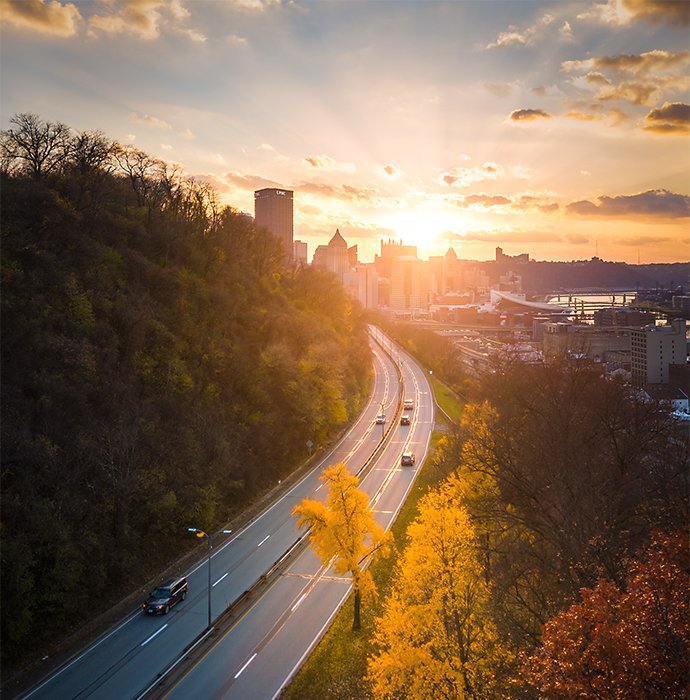
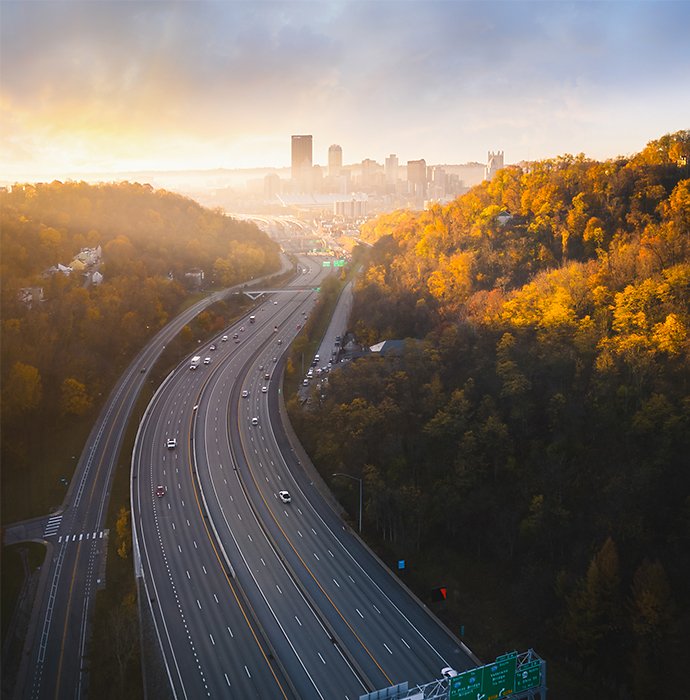
Images by Lukas Kosslow
Think about the lighting.
As always, the time of day that you shoot photos is important. This is especially true when you go out and find natural leading lines, rather than creating them in the studio. The natural lighting on the lines can impact their strength and mood, and varying shadows can give your images a totally new look.
“I had the opportunity to go into a helicopter and take pictures of Pittsburgh. It was right at sunrise, and we were circling the city. And as the sun was coming up, it cast long, long shadows behind the buildings that led your eye right to the city,” says Kosslow. Natural lighting is unique, and with the changing weather and time of day, you’ll never take the same photo twice.
Leading lines can help you craft interesting, compelling photos. So keep your eyes peeled for lines in the clouds, trees, buildings, and rivers, and you may be on your way to a masterpiece.
Contributors
Do more with Adobe Photoshop Lightroom.
Edit photos easily with Lightroom presets, Super Resolution, easily share photos from any device, and access your projects anywhere with cloud photo storage management.
You might also be interested in…
Crafting narratives with street photography.
Embrace this form of candid storytelling and start capturing snapshots of everyday life.
Introduction to black and white photography.
Learn to use black and white photography to hone photography skills and capture perfect photos.
Bring creative storytelling into your photography with forced perspective.
Convey a specific point of view by changing the proportions of your image.
Find your truth in fine art photography.
Follow your passions and explore the conceptual layers of creating artistic photos.
